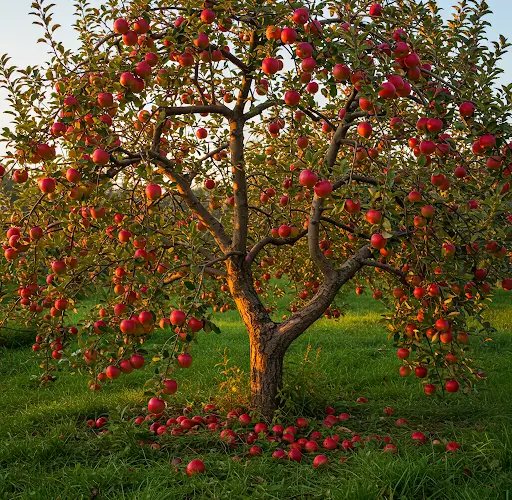Are You Making This Common Mistake When Planting Fruit Trees?
Planting fruit trees is a rewarding and exciting task for any gardener, but it’s also one that requires attention to detail—especially when it comes to preparing the planting hole. Many gardeners, particularly those new to fruit growing, unknowingly make a crucial mistake: digging the hole too deep. While it may seem logical to dig deep and fill the bottom with fertilizer or compost, this practice can actually hinder the long-term health and development of your fruit trees.
Let’s break down the best approach to planting fruit trees correctly from the very start.
Why Depth Matters in Tree Planting
When planting a fruit tree, one of the most important factors is the depth of the planting hole. If the hole is too deep, several issues can arise. The primary problem is related to the grafting point—the spot on the trunk where the fruit-bearing top part of the tree (the scion) is joined to the rootstock. This graft union must be positioned correctly in relation to the soil surface.
Planting too deep can bury the graft union or bring it dangerously close to the soil. When this happens, dormant buds near the graft can awaken and send out unwanted shoots. These shoots divert energy from the main trunk and branches, slowing down overall tree growth and development. In some cases, these offshoots can even overtake the desired variety and reduce fruit production quality.
On the other hand, planting too shallowly can expose the root system and leave the tree unstable. That’s why getting the depth just right is crucial.
The Ideal Hole Size for Fruit Trees
It’s a common misconception that fruit trees need extremely large planting holes. Some gardeners go as far as digging holes up to 80 cm deep and 60 cm wide, thinking that more space will allow the roots to spread easily and quickly. However, this often results in poor outcomes.
Excessively deep holes not only disturb the natural layering of soil (which roots rely on for nutrients and moisture), but they can also make it harder to control the height of the grafting point. Overly wide holes waste time and effort, and they often require unnecessary amounts of soil amendments or fertilizer.
The ideal dimensions for a fruit tree planting hole are:
-
Depth: 50 to 60 cm
-
Width: 40 to 50 cm
These dimensions provide ample space for the root system to spread while ensuring the graft union remains well above soil level.
Problems with Mechanized Digging
Another mistake gardeners make is using heavy equipment such as excavators or motorized augers to dig planting holes. While these machines may speed up the process, they often create irregular or overly compacted hole walls.
In particular, hole drills or augers tend to create smooth vertical walls, which roots struggle to penetrate. Instead of easily branching outward, roots can circle around inside the hole, leading to stunted growth and a less stable tree structure. This root-bound condition can significantly limit the tree’s long-term productivity and health.
Whenever possible, it’s best to dig holes manually with a shovel or spade. This not only gives you greater control over the shape and size of the hole but also helps loosen the surrounding soil, making it easier for roots to spread into the native ground.
Soil Structure Is Just as Important
Once the hole is dug, the type of soil you use to backfill it is just as important as the dimensions. Avoid compacting the soil too tightly around the roots, and never use heavy, clay-rich soil without first improving its structure. The best backfill is crumbly, aerated, and rich in organic matter. This allows for better oxygen exchange and encourages strong root growth.
You can mix a small amount of well-aged compost or organic matter into the backfill soil, but avoid placing large amounts of fresh manure or high-NPK fertilizer at the bottom of the hole. This can burn delicate roots and throw off the nutrient balance. Instead, focus on establishing strong root growth first—fertilization can come later once the tree is well established.
Final Tips for Successful Fruit Tree Planting
-
Ensure the graft union is 5–10 cm above soil level.
-
Water the tree thoroughly after planting to help settle the soil.
-
Apply mulch around the base (but not touching the trunk) to retain moisture and suppress weeds.
-
Support young trees with stakes if wind or soil conditions require it.
By avoiding the mistake of digging overly deep holes and focusing on proper placement and soil preparation, you set your fruit trees up for long-term health and abundant harvests. With just a little extra care at the beginning, you’ll enjoy the benefits for years to come.



